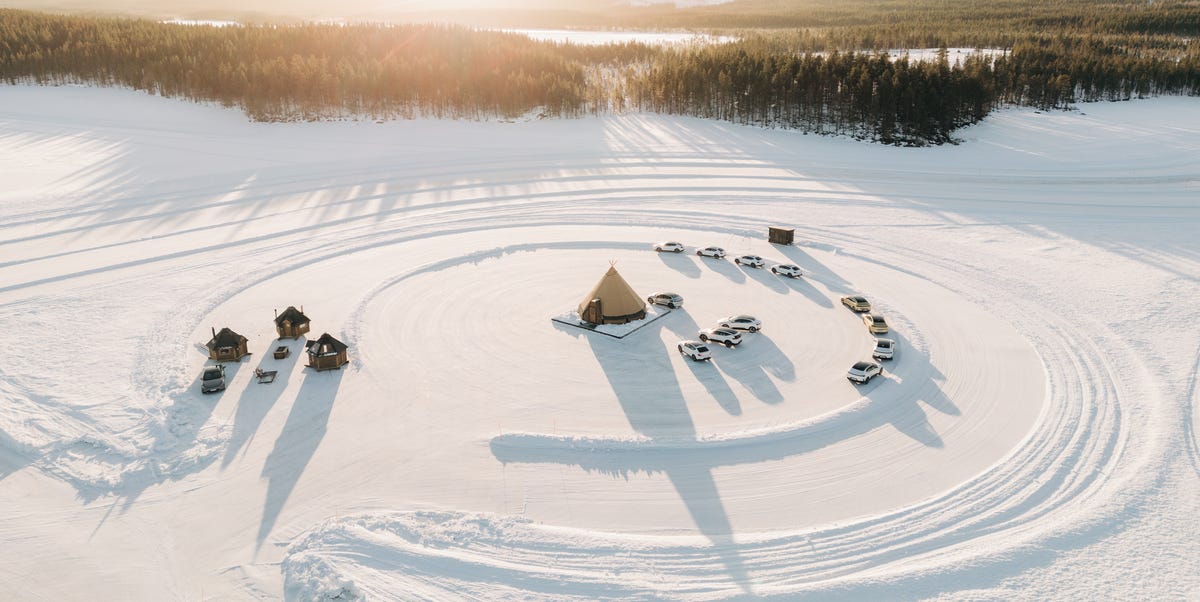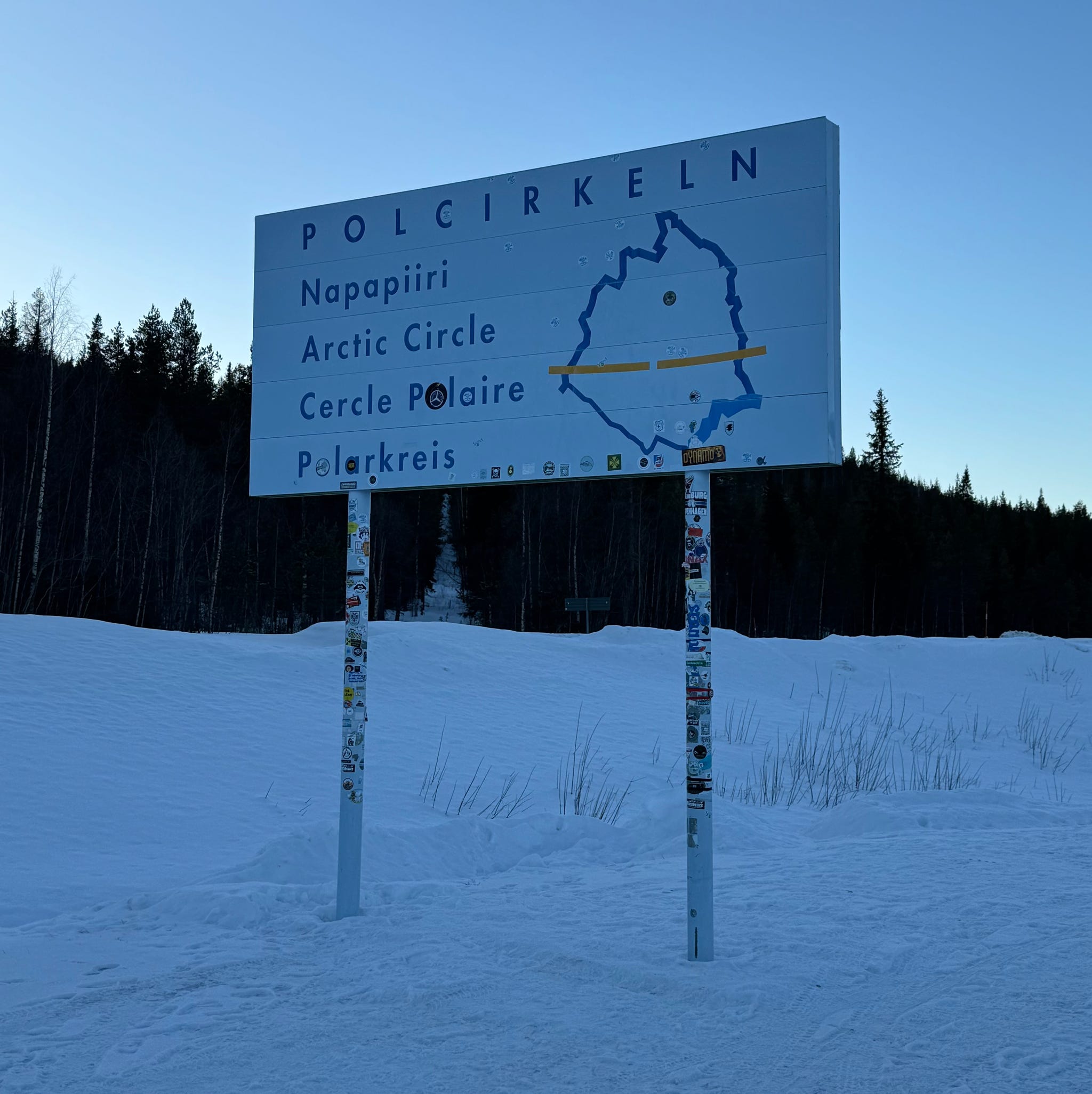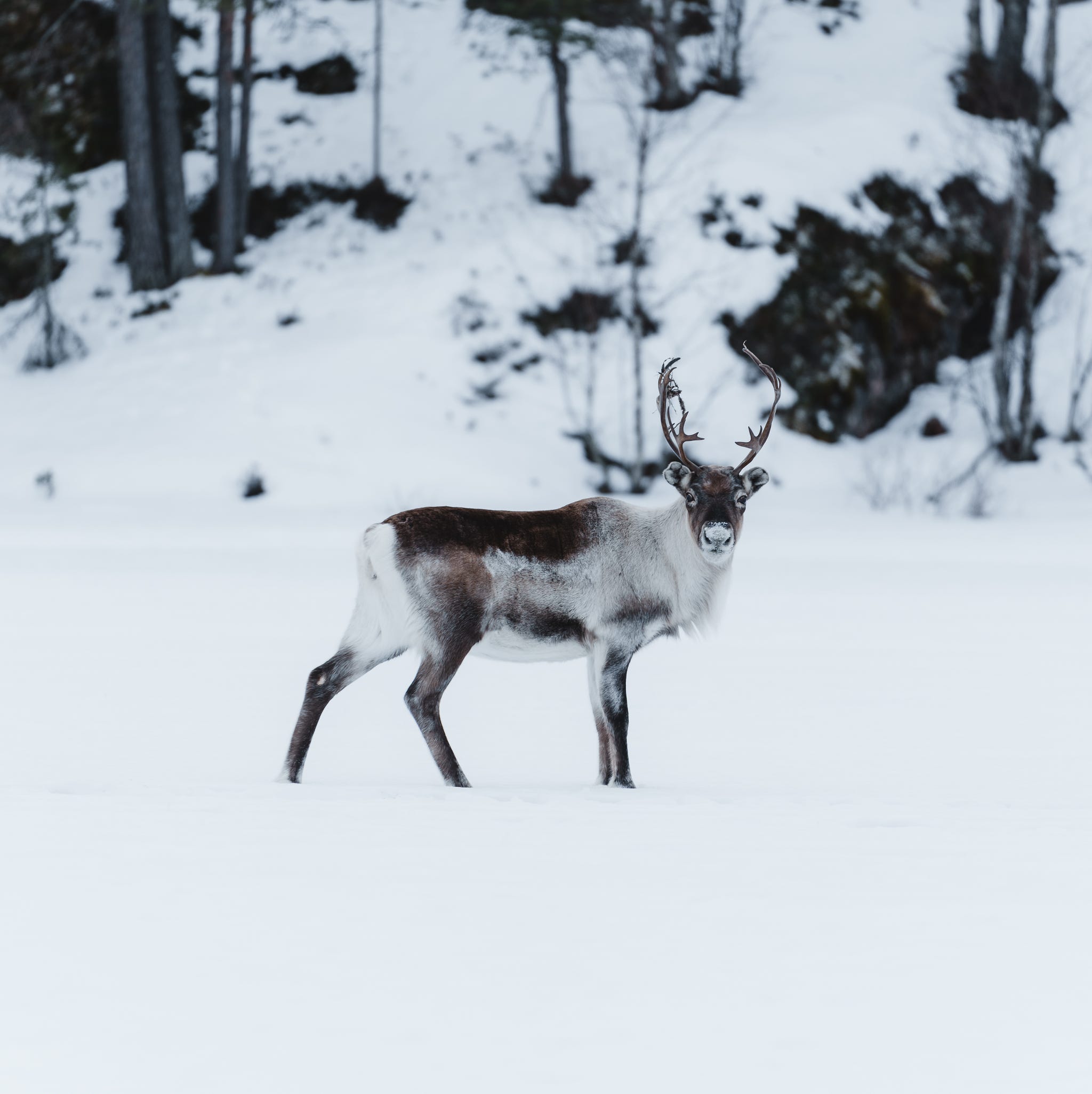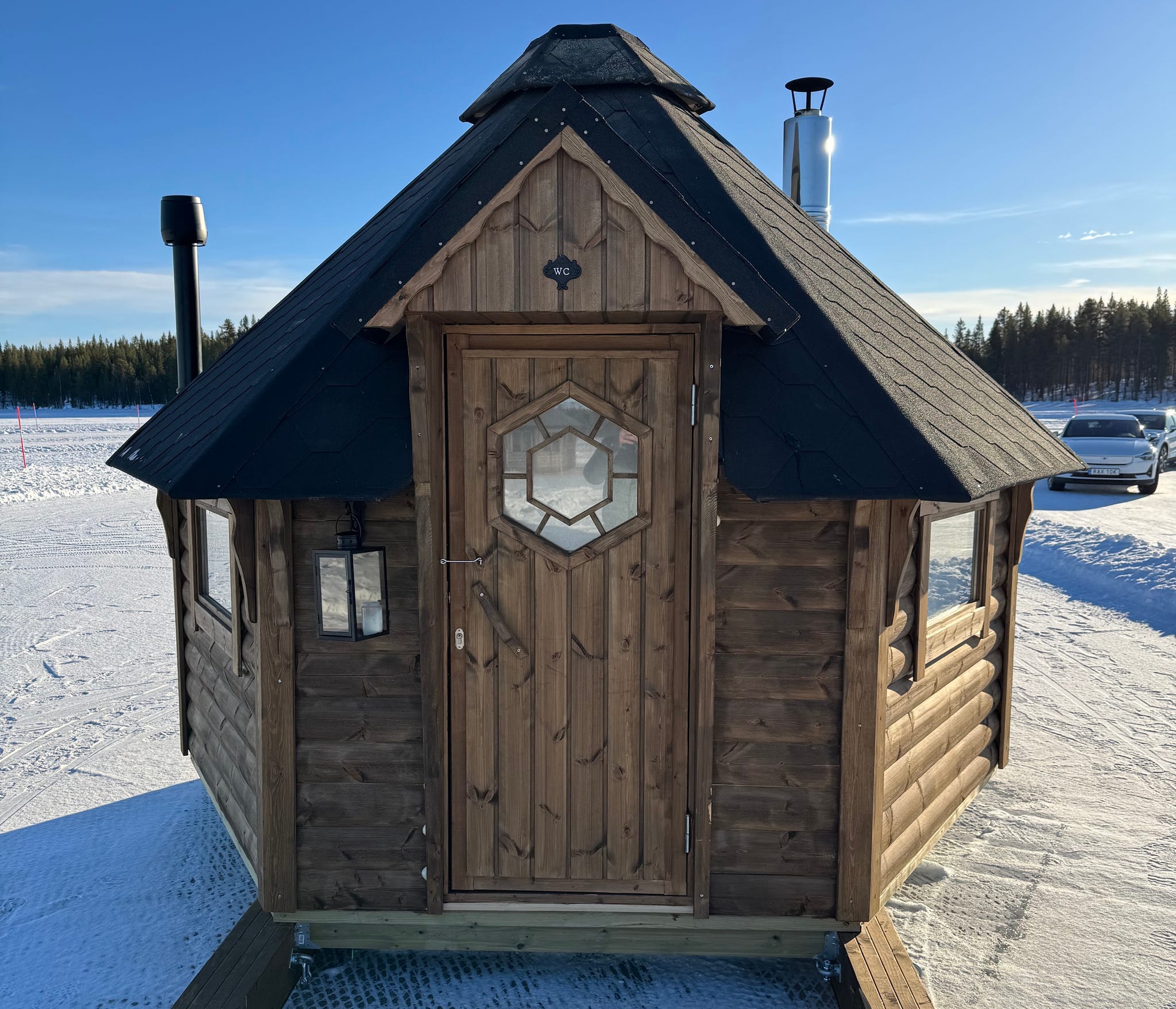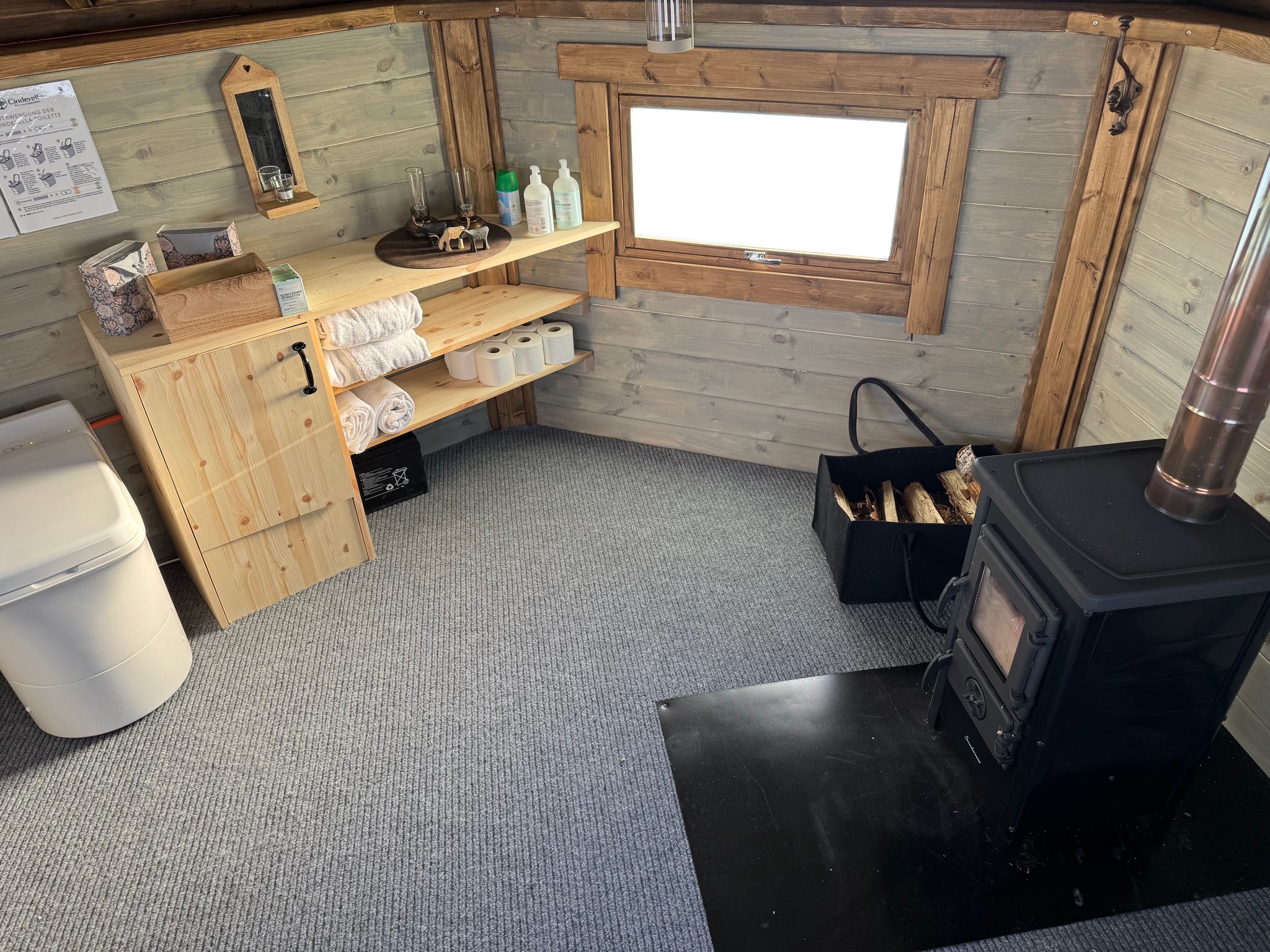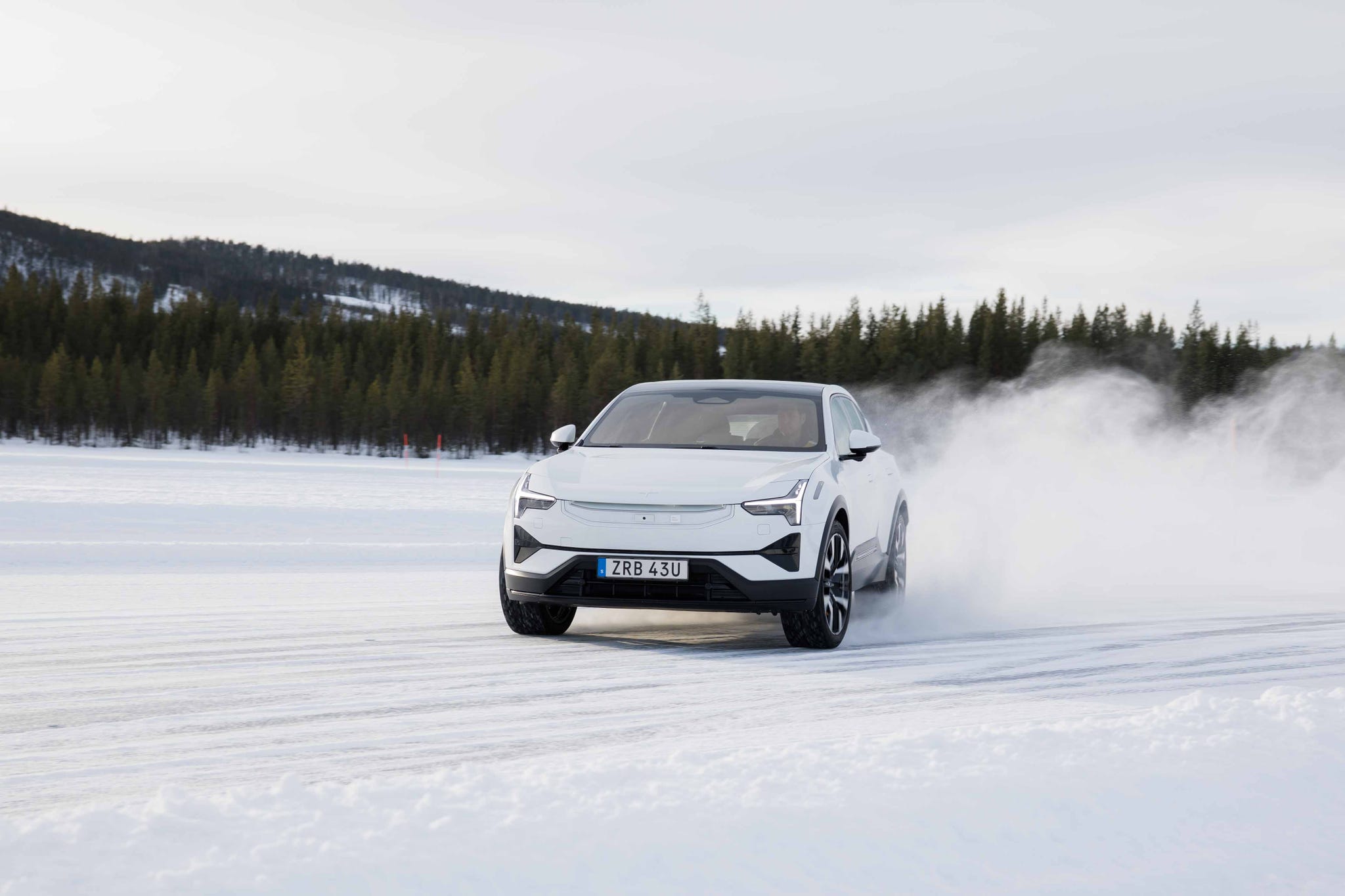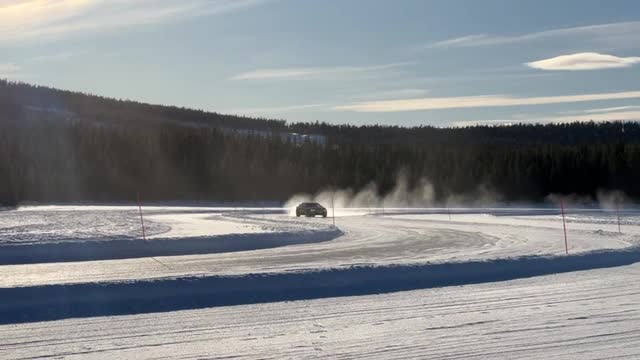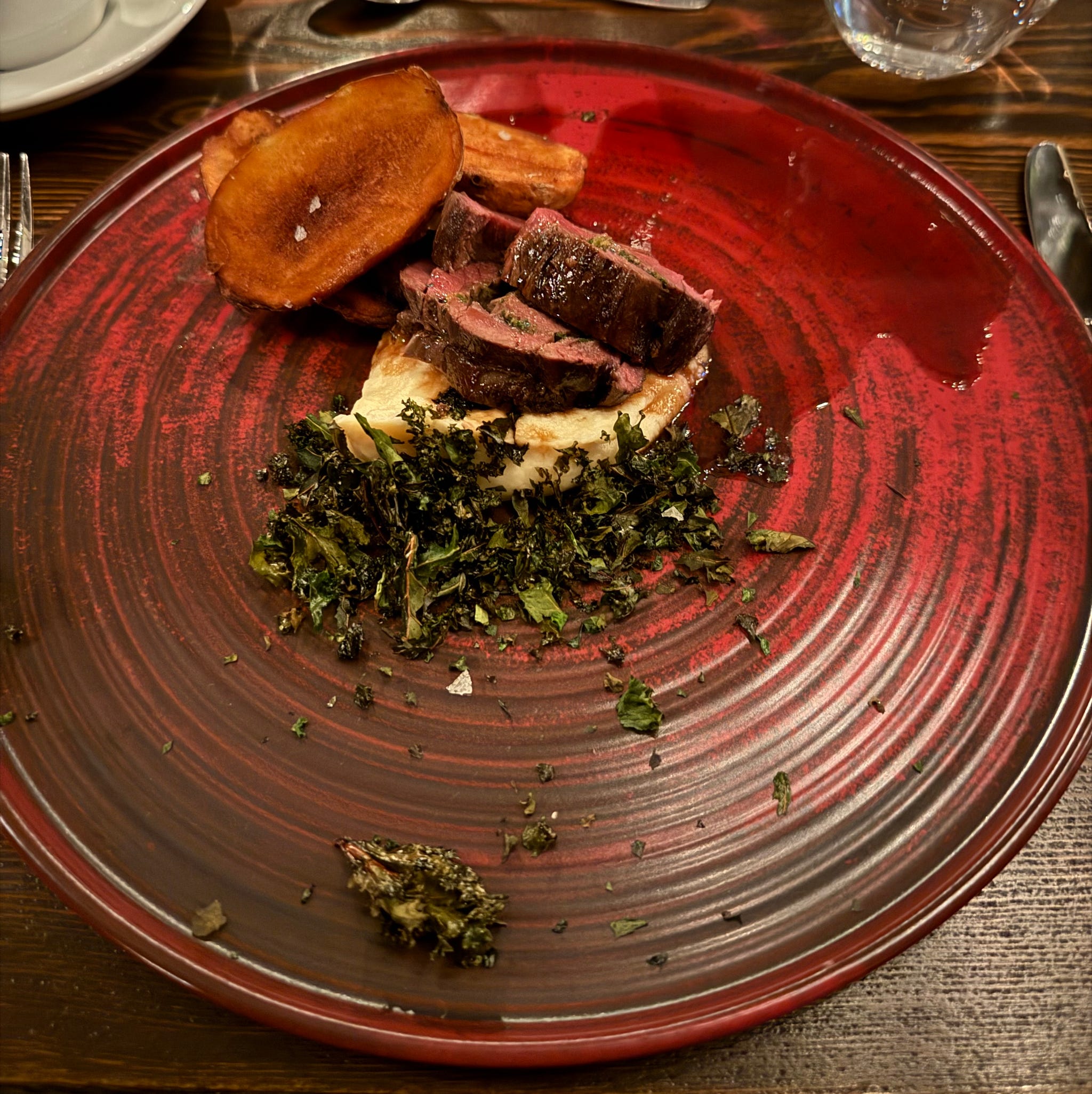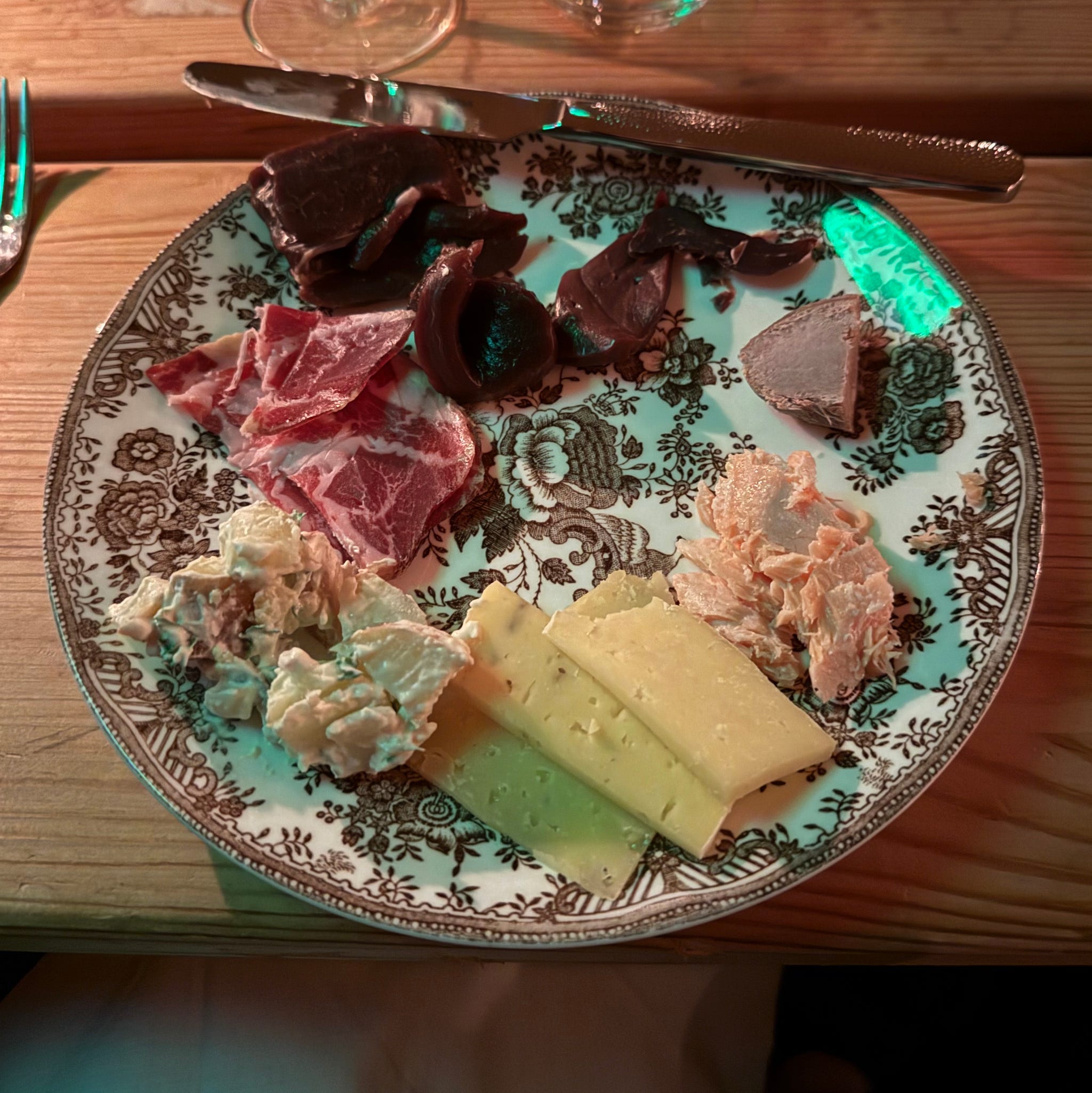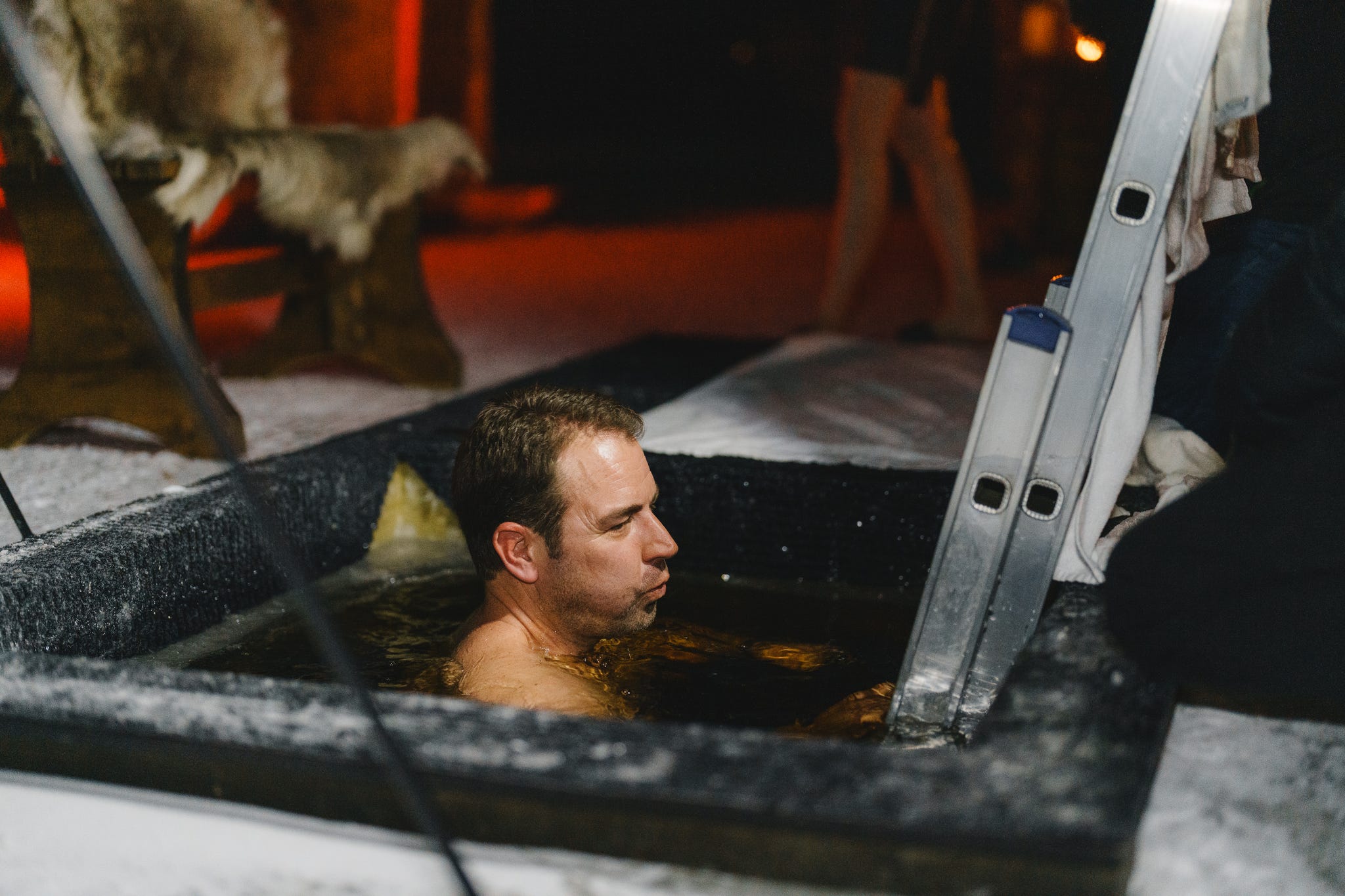Sweden is about the same size as California and a similar shape too, long and thin. From Volvo’s/Polestar’s headquarters in the southwestern metropolis of Gothenburg, it’s about a 17-hour drive to the northern ice of Jokkmokk, where I was headed. Endless two-lane roads lined by snowy evergreens snake along the rivers and lakes that pepper the region.
Jokkmokk is a town of about 3000 inhabitants, although during its popular winter market week—an annual tradition for more than 400 years—the town can see 10 times that number in visitors. The market isn’t its only winter draw. Because of its consistently cold temperatures, the area sees a flurry of automotive testing and development during the winter months. The nearby town of Arjeplog is home to the proving grounds of suppliers Bosch and Hyundai Mobis.
The air is cleaner and crisper up here, and, on average, the temperature in Jokkmokk never gets above freezing from November through March, which is why the ice on the lake we drove was a staggering three feet thick. Polestar created a winter wonderland, plowing and prepping three different ice circuits that varied in length from just over a mile to about 1.3 miles. To keep us warm between sessions, Polestar set up portable shanties and teepees, including the nicest portable bathroom I’d ever seen, which was not only generously sized but featured a roaring fireplace inside.
The company also brought a passel of products from its current lineup: the lifted-hatchback 2, the compact-SUV 3, and the sloping-roofline “coupe” 4. The cars were wearing modestly studded Michelin X-Ice North or Nokian Hakkapeliitta tires, with little, street-legal nubs that up the ice grip slightly, but aren’t anything like the homemade, inch-long monsters that enable 1-g-plus antics. On the longest circuit, the speeds could climb above 60 mph. While it’s always good fun to drift around on a frozen body of water—I’ve done plenty of ice autocrossing and wheel-to-wheel racing in my home state of Michigan—my biggest takeaway was just how naturally and fundamentally balanced each Polestar is. While it’s easy for a rear-biased motor setup to send the tail wide, the 2, 3, and 4 can all be easily controlled and coaxed into oversteer with gentle nudges from the steering wheel, before the power is applied. When you do put your foot down, you apply 469 (Polestar 2) to 536 (Polestar 4) horsepower toward throwing snow, and we all had lengthy plumes following us around the circuits.
Joakim Rydholm, head of driving dynamics, is the person responsible for making these cars feel the way they do. He started his career working on ride and handling of Saabs in the late 1990s and early 2000s before moving to Volvo and then Polestar. When not developing cars, he likes to live life sideways as an enthusiastic rally participant. So it’s no surprise that the Polestar’s Sport modes allow for a generous amount of slipping and sliding. Between explaining his philosophy on tuning the 3’s multi-chamber air suspension and adaptive dampers and where to set the 2’s Ohlins 22-position-adjustable dampers for the Nürburgring versus our terrible Midwest roads back home, Rydholm told me that setting up the balance of the car on ice carries over to high-grip summer pavement, but it’s easier to get the nuanced tuning done on the slippery stuff where things happen more slowly.
While I definitely noticed the 3’s additional 1000 pounds of heft over the 2, I still preferred the 3, as it’s the only one with a mechanical torque-vectoring differential, which adjusts 500 times per second to do the driver’s bidding based on inputs. It works under braking too, so a gentle steering input and a dab of the brakes really rotates the car.
The other thing that’s very clear is that the aggressive regen setup for one-pedal driving is not there for fun. Unlike the Lucid Air Sapphire at this year’s Lightning Lap, no matter how quickly you flick your right foot, the regen effect never encourages a slide and instead has a stabilizing effect. This fun-killing move makes sense for most people, even if those of us at Car and Driver enjoy a good sideways run. The average driver would rather not have the car’s rear end step out off-throttle.
After my run in a Polestar 3, the entire rear window was covered in snow, which suddenly makes the 4’s lack of rear glass make more sense. Why bother having a window if you’re just going to drift till you can’t see out of it? Maybe winter testing inspired that design.
After a full day of making abstract art in snowbanks, we had a chance to explore some of Sweden’s other cultural offerings. They eat a lot of reindeer up here, and also a lot of the reindeer, with the beast’s heart and tongue finding their way onto our plate, in addition to more traditional cuts prepared in almost every manner, including raw. All of it was delicious, and far less gamey than our Midwestern deer in the U.S.
Post-reindeer we warmed up with hot cocoa mixed with peppermint schnapps in traditional Swedish wooden drinking bowls, and then I was ready for our next activity: descending through a hole in the ice for a cold plunge.
There’s certainly not a lot of skill involved in this endeavor, and the advice was straightforward: be mindful of your breathing and breathe deeply. I was comforted by the defibrillator I spotted in the changing area. What could go wrong? It’s certainly shocking to climb down a ladder into 35-degree water, but it wasn’t as painful or as viscerally frigid as I expected. It’s like your body doesn’t believe what it’s experiencing, and only catches up later. Half an hour or so later, my right thigh suddenly registered as freezing. I failed miserably at my one task of controlling my breathing, though, despite observers offering repeated reminders. “I’m trying,” I said, and I was, although I couldn’t do it.
Almost as if on cue, as I emerged breathless from my icy dip and scurried back to the sauna shack to warm up, the Northern Lights lit up the clear, winter sky, a brilliant-green exclamation point on a visit to Arctic Sweden.
Dave VanderWerp has spent more than 20 years in the automotive industry, in varied roles from engineering to product consulting, and now leading Car and Driver’s vehicle-testing efforts. Dave got his very lucky start at C/D by happening to submit an unsolicited resume at just the right time to land a part-time road warrior job when he was a student at the University of Michigan, where he immediately became enthralled with the world of automotive journalism.
